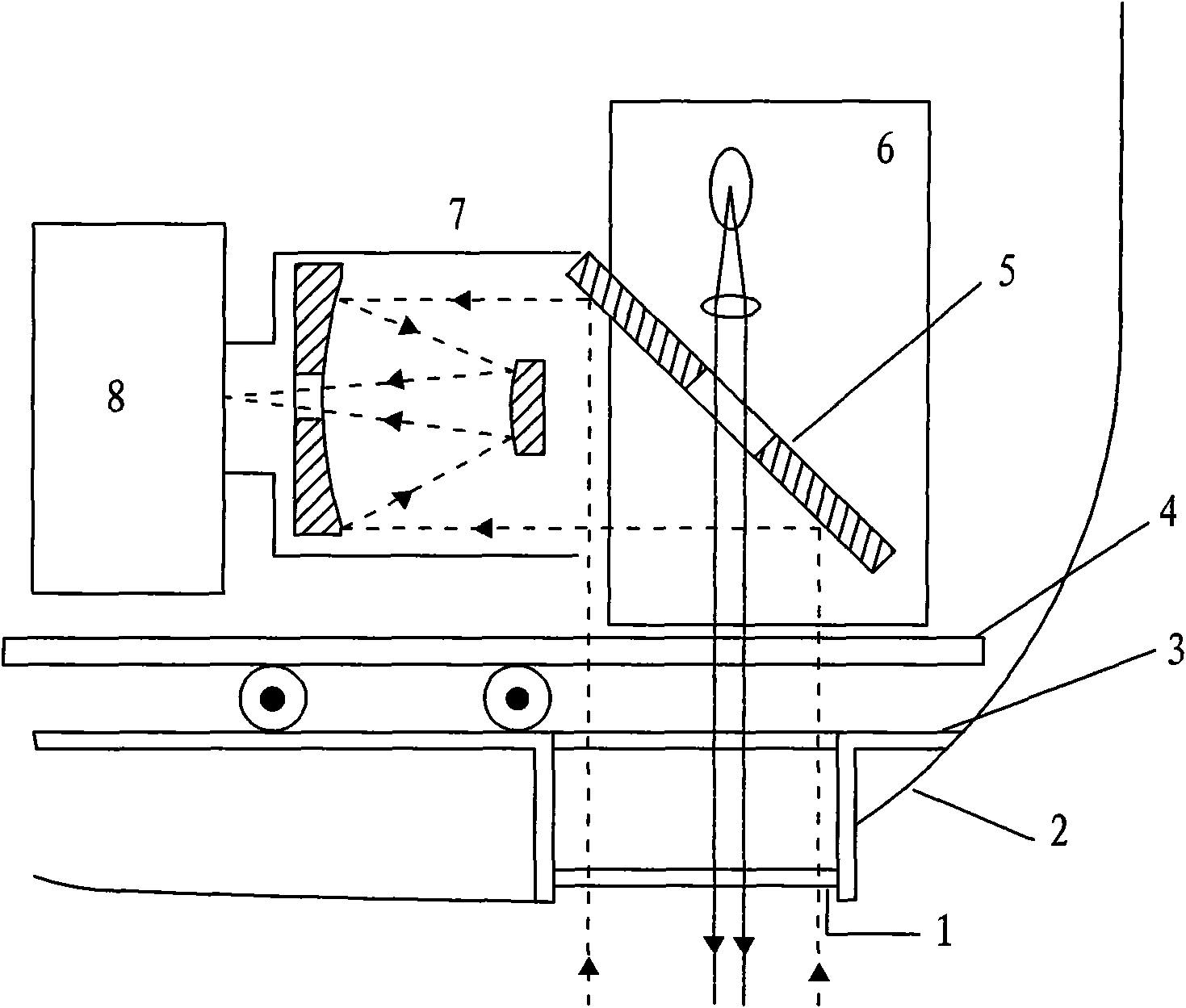Airborne laser-fluorescence sea oil pollution probing device
A detection device and fluorescence technology, which is applied in the fields of optical device exploration, fluorescence/phosphorescence, material excitation analysis, etc., can solve the problems that satellite airborne technology is difficult to detect, and achieve the effect of high recognition rate
- Summary
- Abstract
- Description
- Claims
- Application Information
AI Technical Summary
Problems solved by technology
Method used
Image
Examples
Embodiment 1
[0018] Embodiment 1: as figure 2 The shown laser fluorescence marine oil pollution detection device includes a laser 6 for emitting laser light to the surface of the detection object, a fluorescent telescope 7 for receiving the excited emission from the surface of the detection object, and for receiving the emitted fluorescence amplified by the telescope 7, After the spectrometer receives the fluorescence, especially the internal processor 804 performs spectral feature analysis to identify and analyze the type spectrometer 8 of the detected object; the telescope 7 uses a Cassegrain telescope; the laser 6 is a solid-state laser. the ultraviolet light; the spectrometer 8 adopts a fiber optic spectrometer, and its front receiving end includes: a mirror 801, a spectral filter 802 and a photomultiplier tube 803. The emitted fluorescence returned by the telescope 7 is identified and analyzed, and the spectrometer 8 is provided with a display unit 805 for displaying the category of ...
Embodiment 2
[0020] Embodiment 2: as figure 1 As shown, the principle and main devices of the laser fluorescent marine oil pollution detection device are the same as those of Embodiment 1, except that the laser 6, the telescope 7 and the spectrometer 8 are arranged as a whole; The half-mirror 5 is placed below with an inclination of 45°, and its lower reflecting surface corresponds to the telescope 7; the half-mirror 5 is provided with a light-transmitting hole to allow the laser light emitted by the laser 6 to pass through and scatter back The fluorescence is reflected to the viewing end of the telescope 7 according to its optical path; the spectrometer 8 is arranged at the rear of the observation end of the telescope 7 . In addition, the laser 6, the telescope 7 and the spectrometer 8 are fixed on the slide rail type support 4; the slide rail corresponding to the slide rail type support 4 is fixed on the carrier (in this embodiment, the slide rail is fixed on the aircraft by the aircraft...
PUM
 Login to View More
Login to View More Abstract
Description
Claims
Application Information
 Login to View More
Login to View More - R&D
- Intellectual Property
- Life Sciences
- Materials
- Tech Scout
- Unparalleled Data Quality
- Higher Quality Content
- 60% Fewer Hallucinations
Browse by: Latest US Patents, China's latest patents, Technical Efficacy Thesaurus, Application Domain, Technology Topic, Popular Technical Reports.
© 2025 PatSnap. All rights reserved.Legal|Privacy policy|Modern Slavery Act Transparency Statement|Sitemap|About US| Contact US: help@patsnap.com


